Considered one of Vietnam’s cultural capitals, Huế is located in the central part of the country and holds historical significance, especially as the capital during the Nguyen Dynasty (1802–1945). Listed as a UNESCO World Heritage Site, the city offers visitors an atmosphere where time seems to slow down and traces of the past are still alive, with its impressive architecture, elegant pagodas, majestic imperial tombs, and traditional way of life. Huế is the spiritual and cultural heart of Vietnam, both architecturally and spiritually.
Huế is also captivating with its natural beauty along the Perfume River (Huong River). Temples, bridges, and palace ruins lined along the riverbank complete the city’s historical fabric. Enriched with traditional arts, local delicacies, and handicrafts, this city is an essential stop for both history enthusiasts and travelers in search of cultural exploration. Every walk in Huế feels like a journey into Vietnam’s deeply rooted past.
1. Huế Imperial City (Kinh Thành Huế)
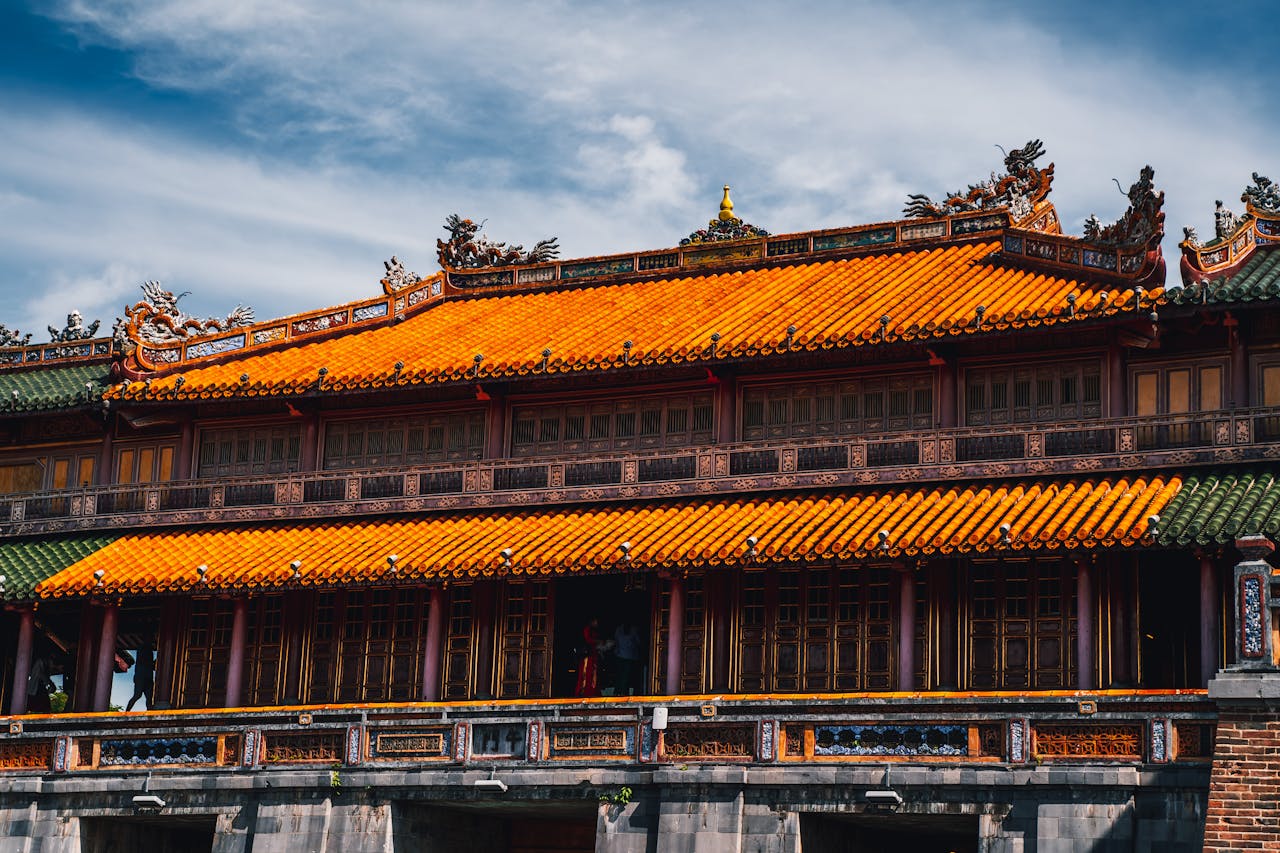
The Huế Imperial City (Kinh Thành Huế) is one of the most important architectural structures built during Vietnam’s Nguyen Dynasty. Construction of this palace complex began in 1804, inspired by China’s Forbidden City, and it served as the residence of emperors until 1945. Listed as a UNESCO World Heritage Site, the Imperial City spans a large walled area that includes coronation halls, temples, royal residences, gardens, and administrative buildings. The Ngo Mon Gate (Southern Gate), located at the entrance, stands out with its architectural elegance and historical symbolism.
Over time, the palace suffered significant damage due to wars and natural disasters, but restoration efforts have been bringing it back to life. One of the most important structures in the palace is the Thai Hoa Palace, known as the site for the official ceremonies of the Nguyen Emperors. Walking through the palace not only offers visitors the chance to discover an architectural marvel but also provides a deep understanding of Vietnam’s monarchical past and traditional court life. It is a must-see site for every visitor to Huế, carrying immense historical and cultural value.
2. Thien Mu Pagoda (Thiên Mụ Pagoda)

Thien Mu Pagoda (Thiên Mụ Pagoda) is one of the oldest and most sacred Buddhist structures in the city of Huế. Located on the banks of the Perfume River, this seven-story pagoda was built in 1601 by Nguyen Lord Nguyễn Hoàng. The pagoda is especially noted for its height and elegant architecture, and it is regarded as one of the central symbols of Buddhist belief in Vietnam. The name “Thien Mu” means “Heavenly Lady” and is based on a legend that a celestial being was seen at the site where the structure was erected.
The pagoda complex includes the Phuoc Duyen Tower, as well as ancient bells, stone statues, temples, and the living quarters of monks. It also houses the Austin car used by Buddhist monk Thich Quang Duc in his self-immolation protest in Saigon in 1963. With its spiritual atmosphere and natural scenery, Thien Mu Pagoda is a significant destination in Huế where visitors find both inner peace and cultural enrichment. Its status as one of the most popular stops on boat tours along the Perfume River further highlights its importance.
3. Minh Mang Mausoleum (Lăng Minh Mạng)
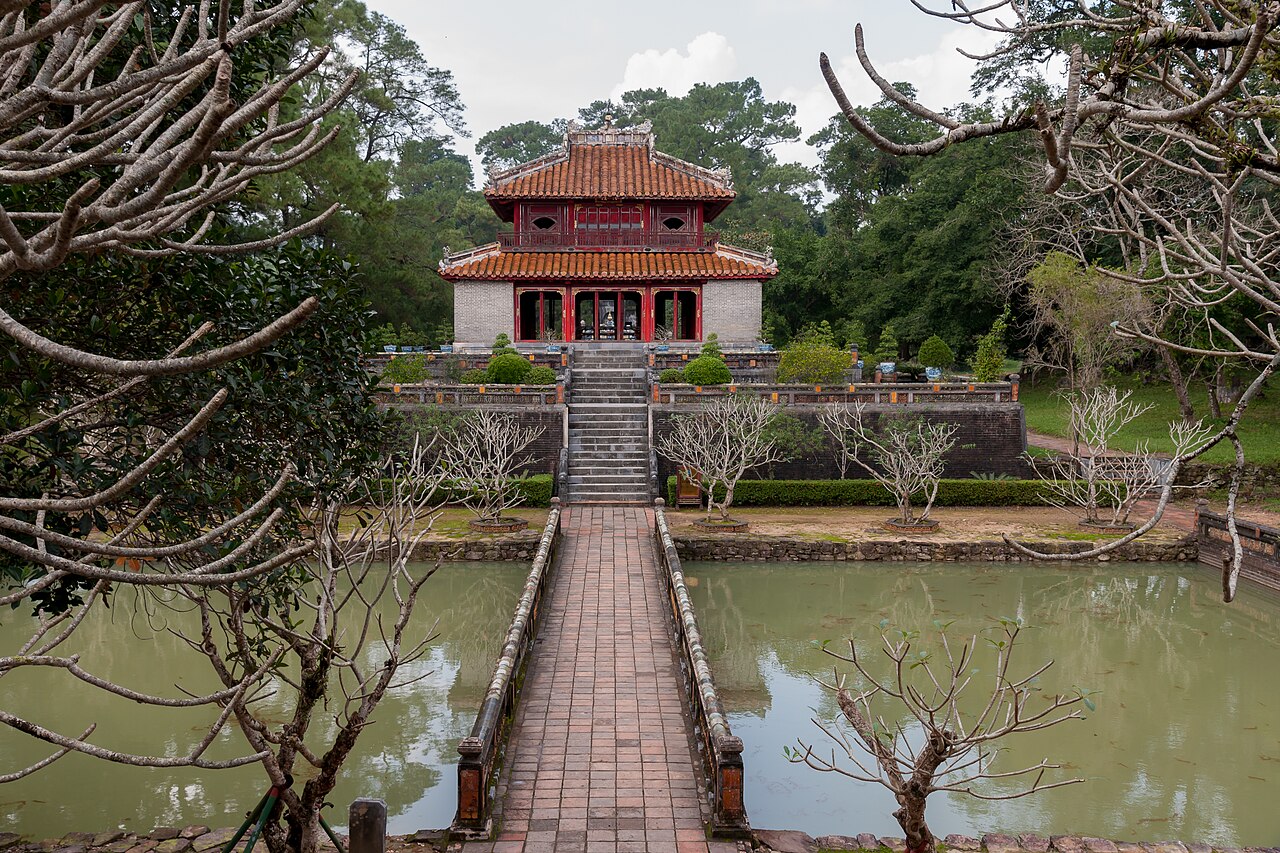
The Minh Mang Mausoleum (Lăng Minh Mạng) was commissioned in 1840 for Minh Mang, the second emperor of the Nguyen Dynasty, and was completed in 1843. Located about 12 kilometers southwest of Huế in a lush forested area along the Perfume River, this magnificent tomb complex offers a perfect harmony between traditional Vietnamese architecture and nature. The mausoleum spans a vast area with over 40 structures, laid out in a symmetrical plan and connected by courtyards, temples, ponds, and bridges.
The Minh Mang Mausoleum is not just a burial site but also a place rich in philosophical and aesthetic significance. Emperor Minh Mang’s devotion to Confucian principles is clearly reflected in the structure’s design. The symmetrical layout, lotus flowers blooming in the ponds, and tranquil ambiance reflect both the serenity of nature and the grandeur of the imperial court. As visitors explore the site, they discover not only a historical figure’s monument but also an elegant expression of Vietnamese culture. In this sense, the mausoleum stands out as one of Huế’s most impressive and poetic landmarks.
4. Khai Dinh Mausoleum (Lăng Khải Định)
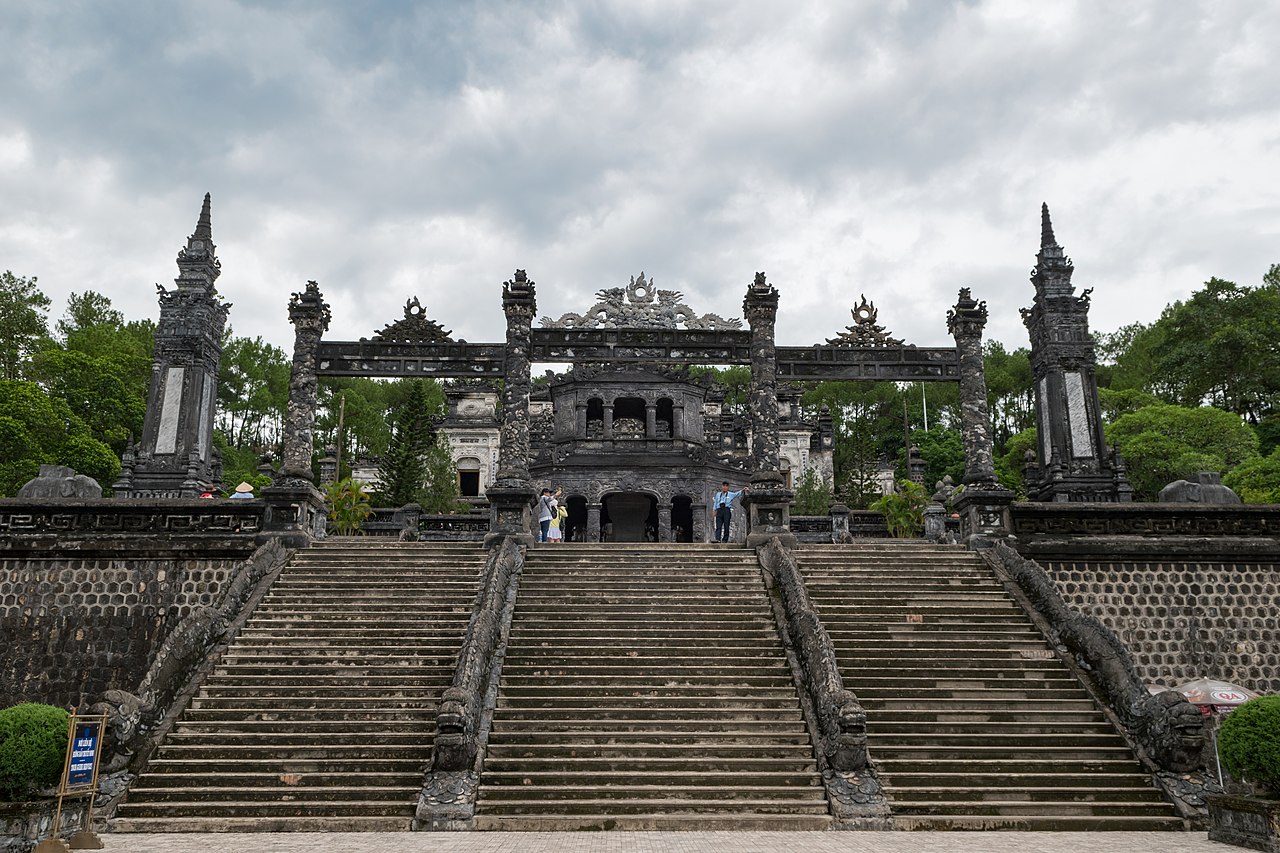
The Khai Dinh Mausoleum (Lăng Khải Định) was commissioned in 1920 for Khai Dinh, the twelfth emperor of the Nguyen Dynasty, and completed in 1931. Built on a mountainside about 10 kilometers from the center of Huế, this imperial tomb differs from others in its unique fusion of both Asian and European architectural elements. Constructed using modern materials such as concrete, iron, and steel, the design blends Gothic, Baroque, and Renaissance styles with traditional Vietnamese architecture.
The interior of the mausoleum is rich in intricate detail. The main hall, Thien Dinh Temple, is adorned with colorful glass and porcelain mosaics, and features an impressive ceiling fresco decorated with dragon motifs. A bronze statue of Emperor Khai Dinh stands atop an ornate stone sarcophagus. As visitors ascend the staircases, the grandeur of the mausoleum becomes increasingly apparent, both surprising and impressing them. With its architectural elegance and elaborate detailing, this tomb is one of the most striking sites that must be seen in Huế.
5. Tu Duc Mausoleum (Lăng Tự Đức)
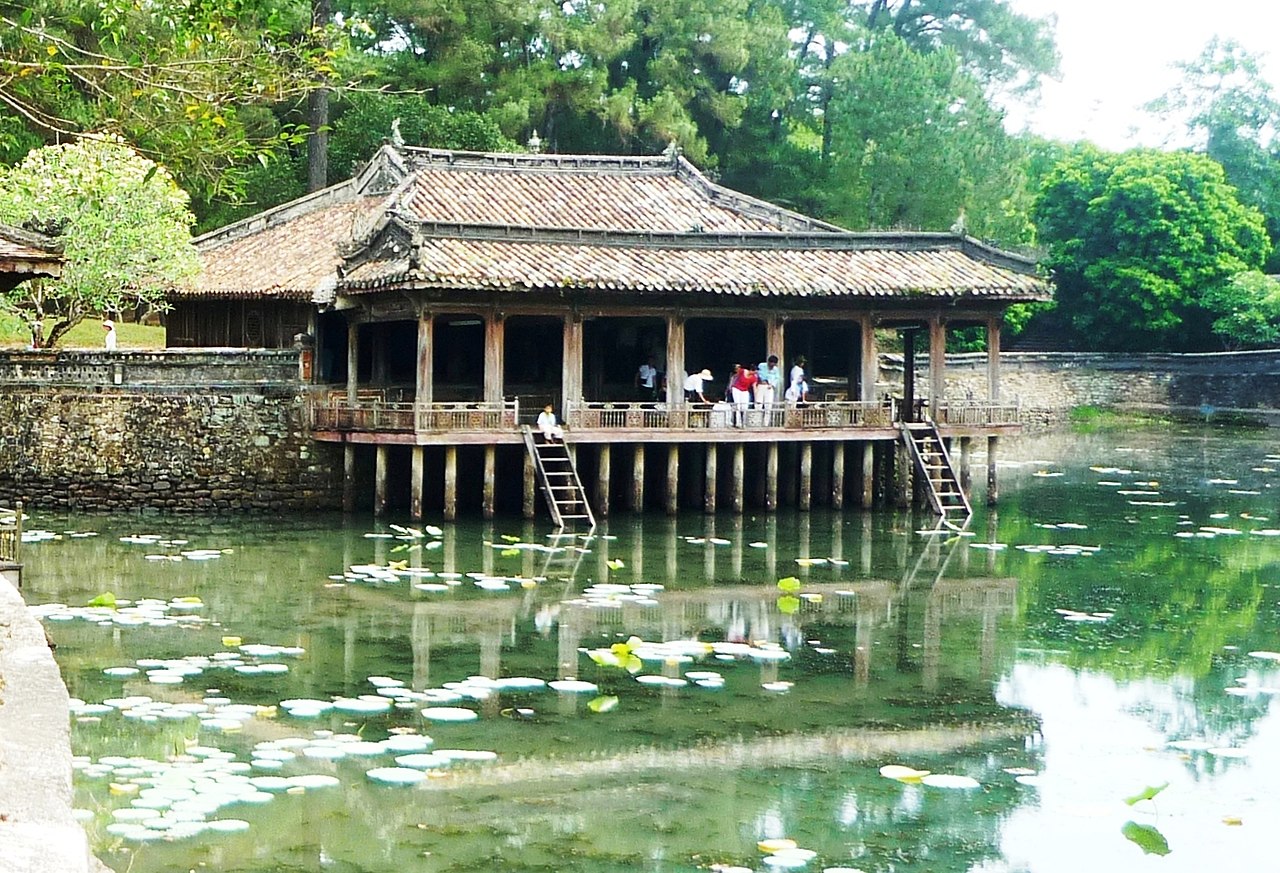
The Tu Duc Mausoleum (Lăng Tự Đức) was built between 1864 and 1867 for Tu Duc, one of the longest-reigning emperors of the Nguyen Dynasty. Located in a peaceful forested area south of Huế, this expansive complex served not only as the emperor’s tomb but also as a retreat and writing palace during his lifetime. Within the mausoleum, a serene and elegant natural landscape prevails, with ponds, pavilions, stone pathways, and graceful bridges. Tu Duc’s love for poetry and the arts is clearly reflected in the architecture and layout of the site.
Among the most notable parts of the complex are the Xung Khiem Pavilion over the pond, ceremonial courtyards, temples, and additional buildings constructed for the emperor’s wives and court members. Ironically, the exact location of Tu Duc’s burial site remains unknown; legend has it that he was secretly buried elsewhere and those who knew the location were executed afterward. Nevertheless, this grand complex offers visitors not only a monument but also a poetic window into the emperor’s inner world. The Tu Duc Mausoleum is one of the most elegant structures in Huế where history and nature are beautifully intertwined.
6. Perfume River (Huong River)
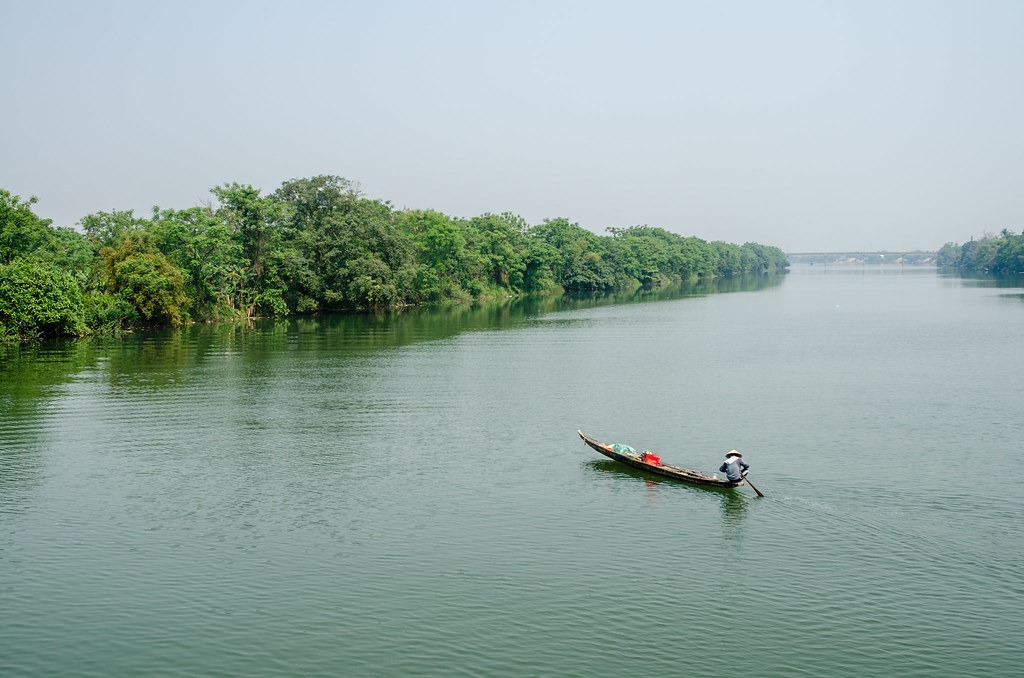
The Huong River, known in Turkish as the “Perfume River,” is a natural beauty that flows through the heart of Huế and gives the region a unique atmosphere. Its name originates from the pleasant fragrance that arises in the autumn months when flowers from the mountain forests fall and blend into the river’s waters. Stretching approximately 80 kilometers, the river is surrounded by Huế’s historical structures and has played a significant role in both local life and the city’s historical development.
Boat tours along the Huong River are among the most romantic ways to explore the city. Especially at sunset, cruises aboard dragon boats offer views of Thien Mu Pagoda, imperial tombs, and historic riverside structures. Walking paths, parks, and cultural event spaces line the riverbanks, making the area a popular relaxation spot for both locals and tourists. The Perfume River is a symbolic element that brings together the history and nature of Huế.
7. Dong Ba Market (Chợ Đông Ba)
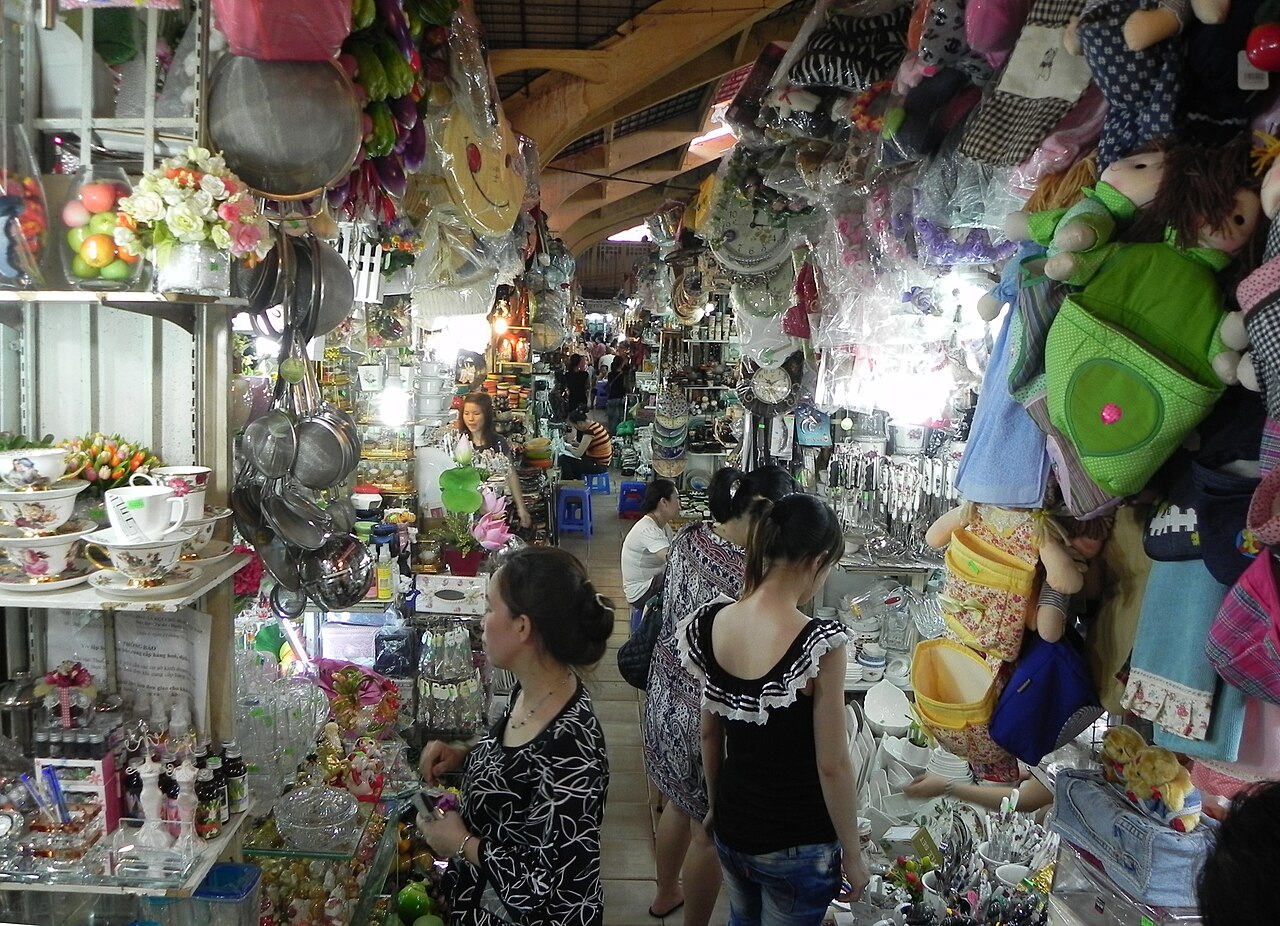
Dong Ba Market (Chợ Đông Ba) is one of the largest and busiest traditional markets in the city of Huế. Established in the late 19th century during the Nguyen Dynasty, the market remains a vibrant commercial and cultural center to this day. Located along the banks of the Perfume River, near the Truong Tien Bridge, Dong Ba Market is heavily frequented by both locals and tourists from the early hours of the morning. In addition to its three-story main building, the market extends into the surrounding streets with hundreds of stalls and shops covering a vast area.
Dong Ba Market offers an extremely rich variety of goods, ranging from traditional Vietnamese products and souvenirs to fresh fruits and vegetables, seafood, textiles, and kitchenware. For those wanting to taste Huế’s local flavors, the food section of the market is a true treasure. It’s possible to sample regional street foods such as bánh bèo, bún bò Huế, and nem lui at affordable prices. Ideal not only for shopping but also for observing local culture, Dong Ba Market is an essential stop that reflects the authentic spirit of Huế.
8. Truong Tien Bridge (Cầu Trường Tiền)
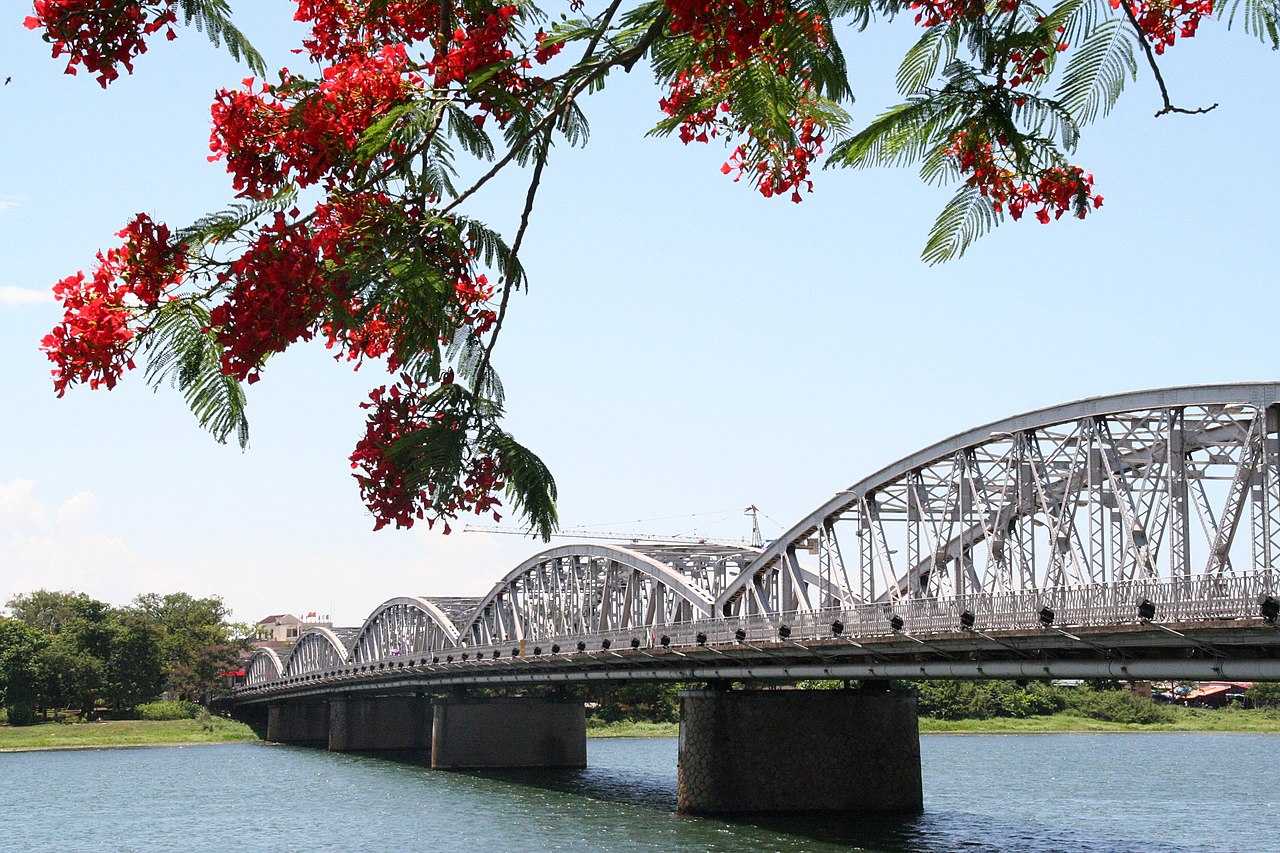
Truong Tien Bridge (Cầu Trường Tiền), one of the symbols of Huế, spans the Perfume River and connects the two sides of the city. Originally constructed in 1899 during the French colonial period, this iron bridge was designed by the company of the famous French engineer Gustave Eiffel. Measuring 402 meters in length, the bridge stands out with its six-arched metal structure and reflects the engineering achievements of its time. Over the years, it has been repaired multiple times due to wars and natural disasters, yet it has always been rebuilt while preserving its historical integrity.
While the Truong Tien Bridge is busy with traffic during the day, it takes on a striking appearance in the evening. Illuminated with colorful lights, the bridge becomes a popular spot for romantic walks and photography for both locals and tourists. It also serves as a scenic highlight during boat tours along the river. Truong Tien is not merely a transportation link, but a living symbol that bears witness to the history, culture, and architecture of Huế.
9. Hue Royal Antiquities Museum (Bảo tàng Cổ vật Cung đình Huế)
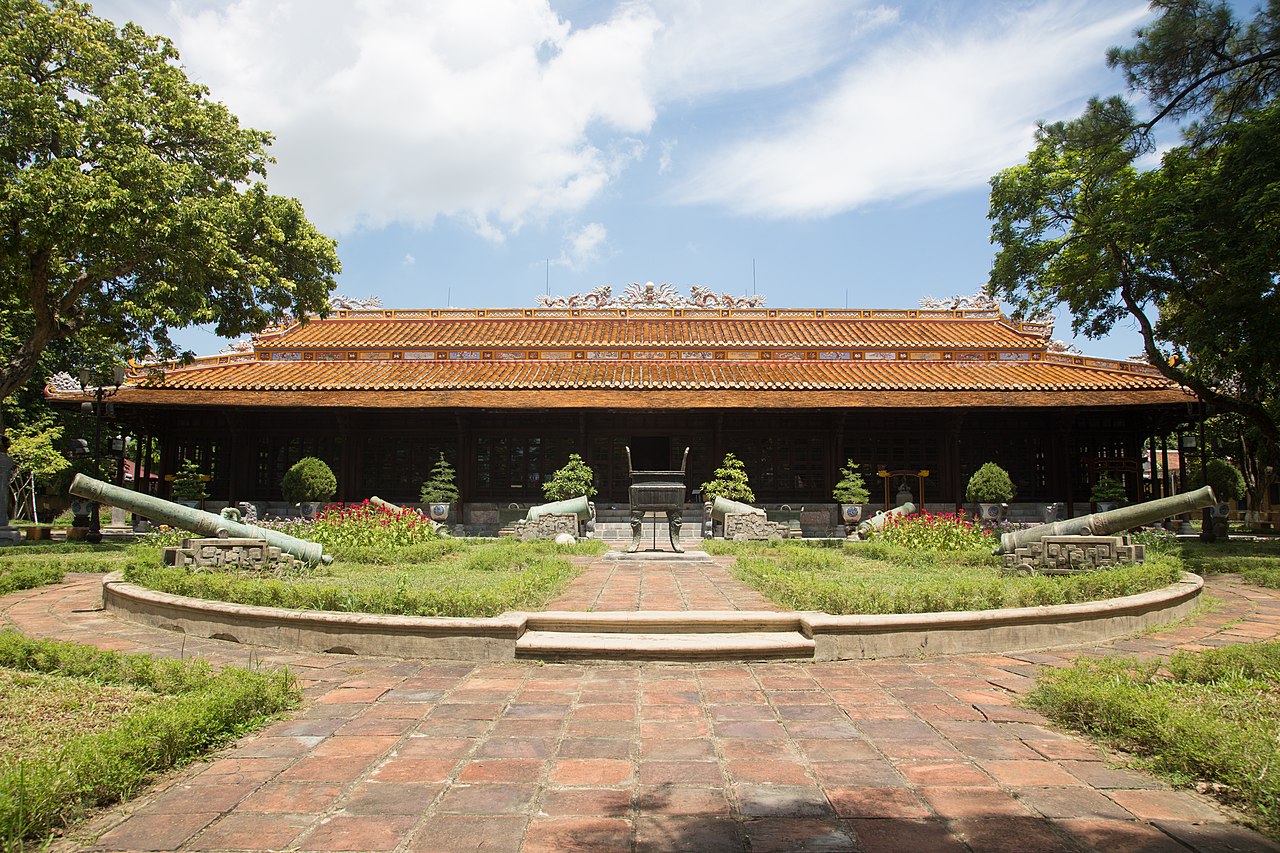
The Hue Royal Antiquities Museum (Bảo tàng Cổ vật Cung đình Huế) is a significant cultural institution that houses one of Vietnam’s most valuable historical collections. Established in 1923, the museum contains thousands of artifacts from the Nguyen Dynasty period, including palace items, furniture, clothing, jewelry, ceramics, and ceremonial objects. The museum is located in the Long An Palace, which was built in the 19th century by Emperor Dong Khanh and is notable for its traditional wooden architecture. Elegant carved decorations, gilded details, and original interior design make the building itself a work of art.
Among the museum’s highlights are imperial thrones, ceremonial garments, dragon-themed objects, and the royal seal—each reflecting Vietnam’s monarchical past and courtly life. These artifacts offer visitors a deep insight into the cultural and aesthetic values of the era. Additionally, inscriptions, documents, and photographs displayed in the museum provide further information about the history of the Nguyen Dynasty. The Hue Royal Antiquities Museum is an essential stop for both history enthusiasts and lovers of art and culture.
10. Thanh Toan Bridge (Cầu ngói Thanh Toàn)
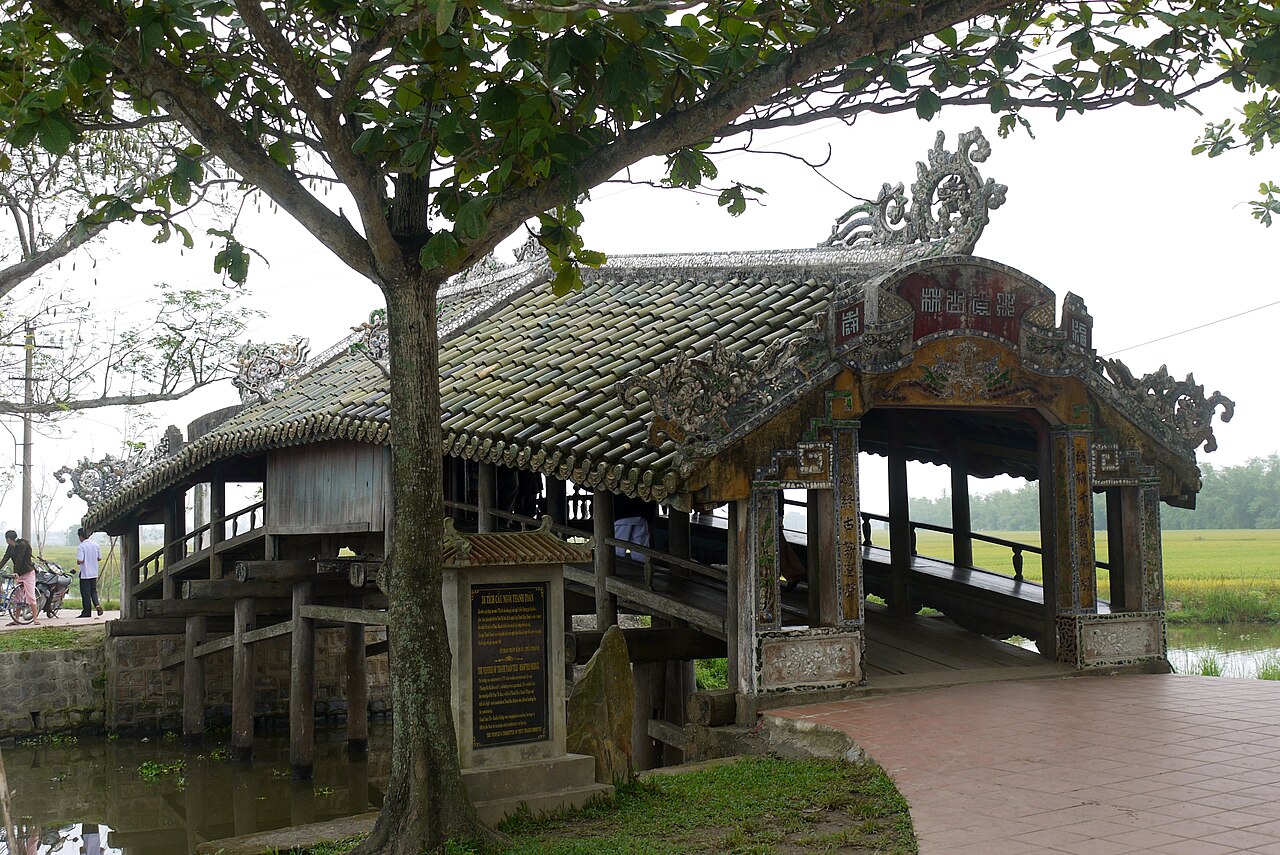
Thanh Toan Bridge (Cầu ngói Thanh Toàn) is a historic and elegant structure located in Thuy Thanh village, about 8 kilometers east of Huế’s city center. Built in the 18th century by a philanthropic woman named Trần Thị Đạo, who was born in the village, this covered bridge holds great architectural and cultural significance. Constructed in traditional Vietnamese style, it features a stone-arched foundation and a wooden frame, with a tiled roof covering the walkway. The structure serves both as a passageway and a resting place. The bridge also draws attention for its resemblance to the Japanese Bridge in Hoi An.
Thanh Toan Bridge is not just a means of crossing but also serves as a social hub for village life. Inside the bridge are seating areas and a small worship corner where locals relax, chat, and pray. Along with the nearby village market and agricultural museum, it offers visitors a chance to observe rural Vietnamese life up close. Surrounded by natural scenery, this peaceful bridge stands as a meaningful symbol of the simplicity of traditional architecture and the value of community solidarity.
11. Tu Hieu Pagoda (Chùa Từ Hiếu)

Tu Hieu Pagoda (Chùa Từ Hiếu) is one of Vietnam’s most religiously and historically significant Buddhist temples, located in a peaceful forested area southwest of Huế. Originally built in 1843 by Monk Nhat Dinh, the pagoda formed close ties with the royal court during the Nguyen Dynasty and became a religious center supported by members of the royal family. Constructed in traditional Vietnamese architectural style, the temple offers visitors spiritual serenity with its tranquil atmosphere, lush gardens, and lotus ponds.
Tu Hieu Pagoda is not only a place for religious worship but also an active monastery where many monks live and receive training. In the temple’s courtyard lie the tombs of eunuchs who served in the Nguyen royal court, reflecting the pagoda’s close connections with the imperial household. This retreat-like setting in the quiet of nature is ideal for both those seeking meditation and those wishing to deeply explore Vietnam’s Buddhist traditions. With its simple architecture and spiritually rich environment, Tu Hieu stands as one of Huế’s most impressive religious sites.
12. Nam Giao Esplanade (Đàn Nam Giao)

Nam Giao Esplanade (Đàn Nam Giao) is one of the most important religious ceremonial sites built during the Nguyen Dynasty in the city of Huế. Constructed in 1806 by Emperor Gia Long, this open-air altar was used for sacrificial ceremonies (Giao lễ) dedicated to the heavenly deities. In these Confucian-based rituals, the emperor would pray to the heavens on behalf of the people, asking for good harvests, peace, and prosperity. Nam Giao is one of the most magnificent places that embody Vietnam’s traditional belief in “heaven and earth worship.”
The site features a three-tiered, symbolic architecture representing the cosmic balance between heaven, humanity, and earth. Each level refers to a different social and spiritual plane. Today, Nam Giao Esplanade is preserved as a historical and cultural monument, attracting attention during events such as the Huế Festival, where traditional ceremonies are reenacted. With its serene atmosphere and expansive forested surroundings, it serves not only as a historical relic but also as a spiritual link to the past.
13. Quoc Hoc High School (Quốc Học Huế)

Quoc Hoc High School (Quốc Học Huế) is one of Vietnam’s oldest and most prestigious educational institutions. Established in 1896 during the French colonial period, the school was originally founded to educate the children of the Nguyen Dynasty aristocracy and high-ranking officials. Located in the center of Huế along the banks of the Perfume River, the high school was built in classic French colonial architectural style and stands out with its historic red-colored building. With its spacious campus, green trees, and well-maintained gardens, it has become more than just a school—it is a cultural symbol.
Quoc Hoc High School is known not only for its architecture but also for its notable alumni. Among them is Vietnam’s legendary leader Ho Chi Minh, who briefly studied there. Over the years, the school has produced many of the nation’s leading intellectuals, writers, and statesmen. Today, due to its academic reputation and historical value, Quoc Hoc is visited with great interest and stands as a special structure reflecting Huế’s intellectual identity and the educational heritage of modern Vietnam.
14. Bach Ma National Park (Vườn quốc gia Bạch Mã)

Bạch Mã National Park (Vườn quốc gia Bạch Mã) is located approximately 40–60 km south of Huế and was designated a protected area in 1986, gaining national park status in 1991. Spanning about 220 km², it encompasses tropical mountain forests, humid vegetation, and a biogeographical transition zone between northern and southern Vietnam. This rich ecosystem is home to endemic bird species—such as the Vietnamese crested argus and Edward’s pheasant—as well as endangered mammals like the red-shanked douc langur. During the French colonial period, the area was developed into a hill station with a settlement that included 139 villas.
The park offers breathtaking natural attractions: the 1,448-meter-high Bạch Mã peak (Hai Vong Dai), the cluster of lakes known as Ngu Ho (Five Lakes), and the 200-meter-tall Do Quyen Waterfall. From the summit’s viewing area, visitors can see Lang Co beach, valleys stretching toward Hoi An, and the Pacific Ocean. Trekking routes wind through forests, waterfalls, and remnants of colonial-era structures—some trails are challenging, while others are more accessible. The park is open year-round (07:00–17:00), with an entrance fee of around 40,000 VND for adults. The best time to visit is from December to April, with spring offering a magical display of blooming rhododendrons.
Bạch Mã is one of Vietnam’s most captivating destinations for nature lovers, hikers, and explorers of rare ecosystems.
15. Dien Tho Palace (Điện Thọ Cung)
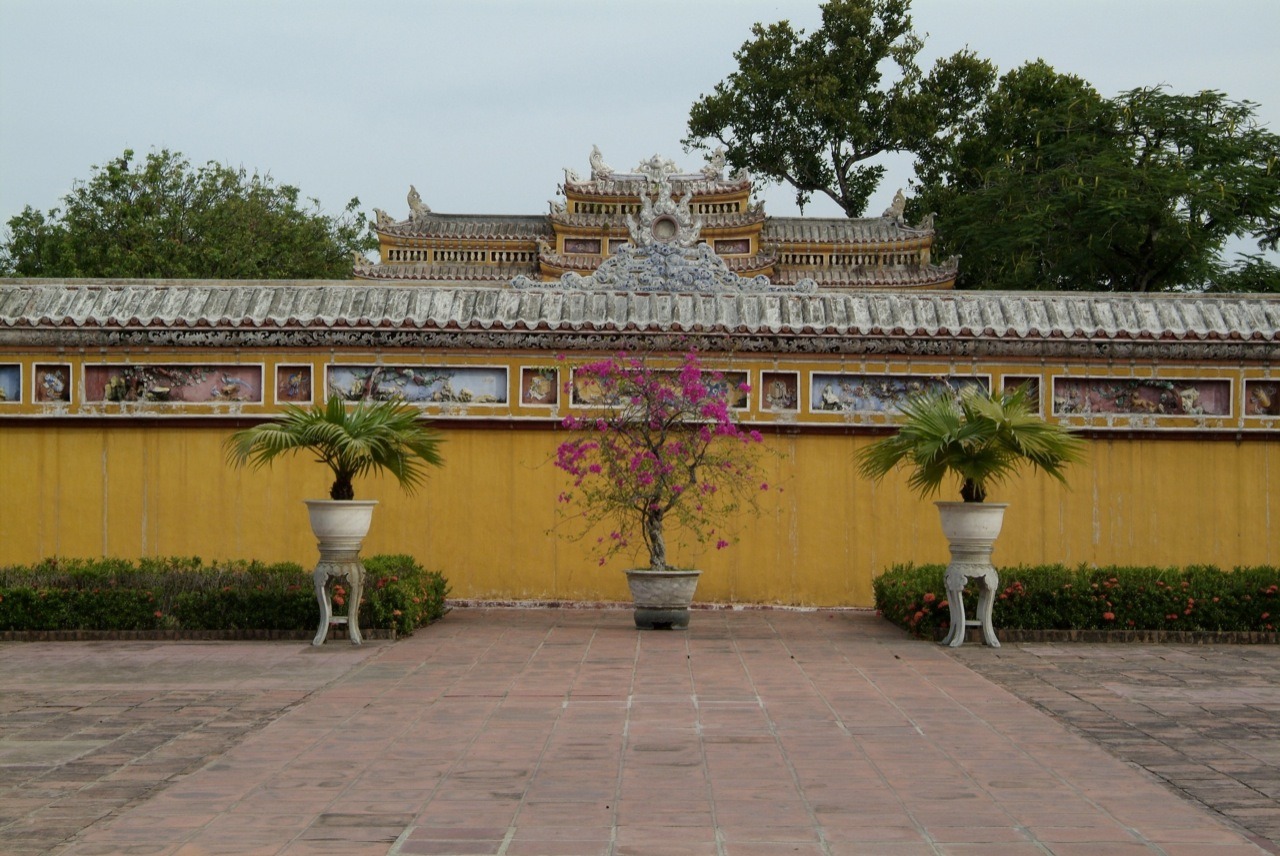
Dien Tho Palace (Điện Thọ Cung) is one of the most important structures within the Huế Imperial City, designated during the Nguyen Dynasty for queens and imperial mothers. Originally built in 1803 by Emperor Gia Long, the palace was later expanded and restored multiple times. Surrounded by spacious courtyards, elegant pavilions, and inner gardens, the structure served as both a residential area for female members of the royal court and a center for official receptions and ceremonies. While the architecture reflects traditional Vietnamese style, its decorations emphasize elegance and refinement.
One of the most striking parts of Dien Tho Palace is the Dien Tho Chanh Dien (Main Hall), the largest building within the complex, which served as the official residence of the queen mother. This space is aesthetically and historically rich, featuring colorful lacquered decorations, carved wooden columns, and traditional roof architecture. The palace complex also includes small temples, resting rooms, and quarters for attendants. Today, visitors to Dien Tho Palace gain a rare insight into royal life during the Nguyen Dynasty, particularly the roles and daily routines of women within the imperial household.
16. Thai Hoa Palace (Điện Thái Hòa)
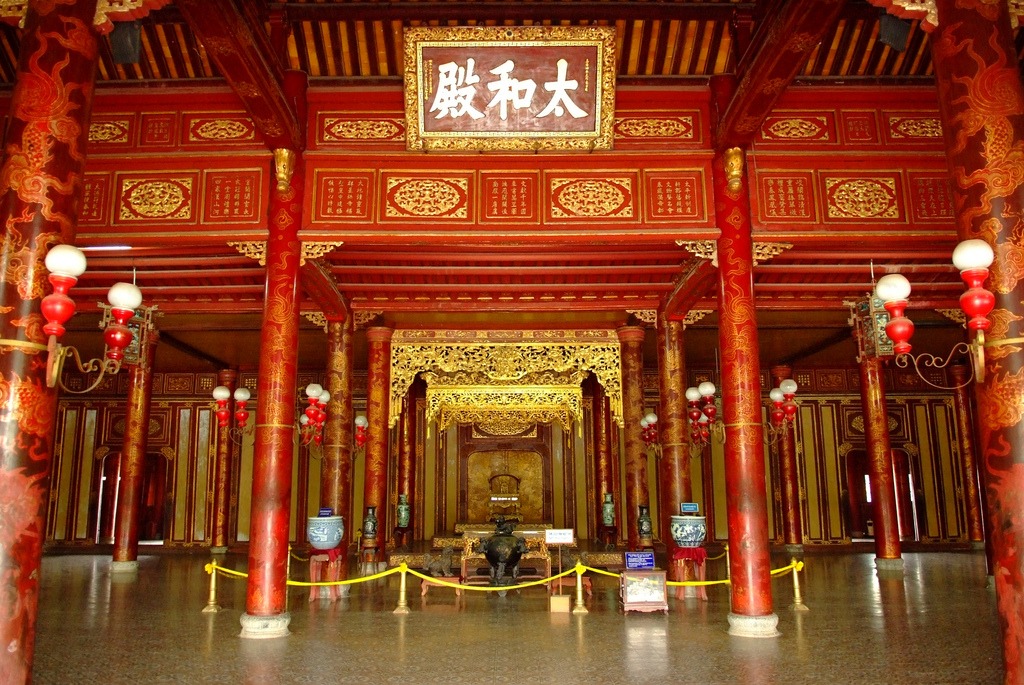
Thai Hoa Palace (Điện Thái Hòa) is a significant ceremonial hall located at the center of the Huế Imperial City and stands as a symbol of the Nguyen Dynasty’s authority. Construction began on February 21, 1805, by Emperor Gia Long and was completed in October of the same year. In 1833, Emperor Minh Mang relocated it to its current site to enhance its grandeur, and it has since undergone multiple restorations. The name “Thái Hòa” means “Harmony of the Universe,” and the palace was used for major state ceremonies such as coronations, imperial birthdays, and the reception of envoys. Covering a total area of 1,360 m², the structure features a double-roof system that reflects imperial luxury.
The interior of the palace is supported by 80 wooden columns, and its wooden ceiling is adorned with dragon and cloud motifs. The throne sits on a three-tiered platform beneath a woven canopy decorated with nine dragon emblems. The intricate carvings, lacquered surfaces, and gilded decorations give the palace both aesthetic and spiritual significance. Additionally, the symbolic use of numbers such as five and nine in the staircases reflects their importance in imperial ideology. Today, the palace is preserved as part of a UNESCO World Heritage Site and is open to the public as a ceremonial space.
17. Hon Chen Temple (Điện Hòn Chén)
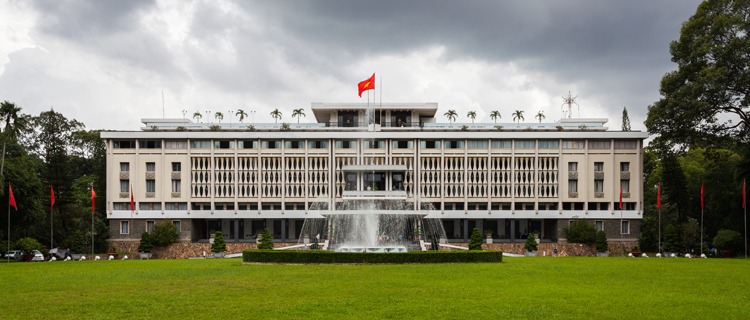
Điện Hòn Chén (Hon Chén Temple) is located on Ngọc Trản Mountain along the Perfume River and stands as one of Huế’s religious and cultural symbols. Originally established in the 1800s as a temple dedicated by the Chăm people to the female goddess Po Nagar (Thien Y A Na), it later became a sacred site for royal ceremonies during the Nguyen Dynasty. The name “Hòn Chén” originates from a local legend in which a turtle returned a precious porcelain cup that Emperor Minh Mang had accidentally dropped into the river.
The temple complex consists of more than 10 structures scattered along the hillside. The central building, Minh Kinh Đài, is dedicated to the goddess and features a three-tiered altar. Surrounding it are auxiliary and sacred buildings such as Ngu Hanh Palace, Quan Cư, and Trinh Cát Viện. Điện Hòn Chén uniquely blends imperial rituals with folk beliefs. Celebrations in honor of Thien Y A Na, especially those held in March and July, include long river parades and traditional music performances. These rituals reinforce the temple’s dual importance as both a sacred and cultural landmark.
18. Tomb of Gia Long (Lăng Gia Long)

The Tomb of Gia Long (Lăng Gia Long) was built for Gia Long (Nguyễn Phúc Ánh), the founder and first emperor of the Nguyen Dynasty. Located about 16 kilometers southwest of Huế’s city center in a mountainous and forested area, construction of the mausoleum began in 1814 and was completed in 1820. The complex not only houses the tomb of Gia Long but also includes the graves of Empress Thừa Thiên and several other family members. The structures are designed in harmony with nature, featuring simplicity and symmetrical layouts.
Among the Nguyen tombs, Lăng Gia Long is the most secluded and natural. Free from artificial ornamentation, it consists of modest stone structures set within a wide natural landscape. The pond and hills facing the main tomb add impressive visual depth. Architecturally, the tomb reflects the Confucian worldview of harmony with nature and stands as a symbol not of imperial power, but of understated elegance. Secluded from crowds, this site is a hidden gem in Huế for history enthusiasts and visitors seeking a peaceful atmosphere.
19. An Dinh Palace (Cung An Định)
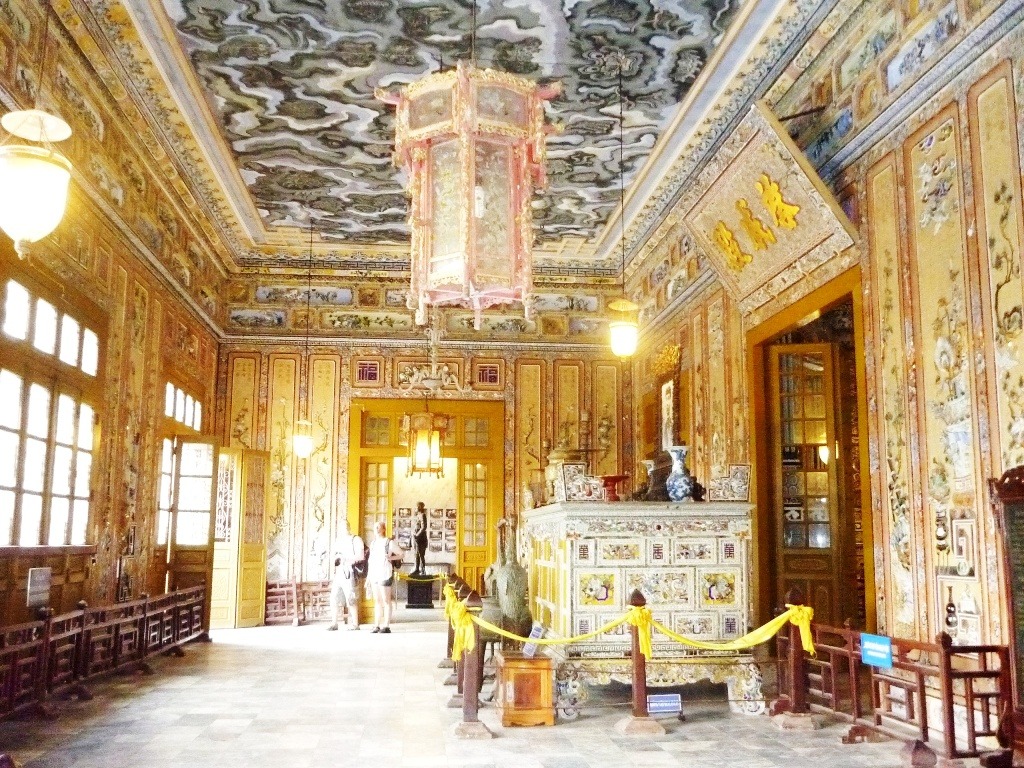
An Dinh Palace (Cung An Định) is one of the most striking structures from the later period of the Nguyen Dynasty and is located near the center of Huế, on the northern bank of the Perfume River. Built in 1917 by Emperor Khai Dinh as a private residence for his father, Emperor Dong Khanh, the palace is a rare example of French influence on royal Vietnamese architecture, featuring Western styles such as Baroque, Gothic, and Art Nouveau. While the palace’s exterior is adorned with European-style stonework, the interior stands out with gold-leaf carvings, colorful frescoes, and stained-glass windows.
An Dinh Palace was originally the centerpiece of a larger complex consisting of ten buildings, most of which were destroyed over time, leaving only the main structure, Khai Tuong Lâu, intact. This main building housed the royal family’s living quarters, guest rooms, and grand reception halls. After the monarchy ended in 1945, the palace became private property for a time before being brought under state protection and restored. Now functioning as a museum, the palace offers visitors a close view of the late Nguyen Dynasty lifestyle, the blend of Western influences with royal aesthetics, and Vietnam’s historical transformation.
20. Vong Canh Hill (Đồi Vọng Cảnh)

Vong Canh Hill (Đồi Vọng Cảnh) is located south of Huế’s city center, along the banks of the Perfume River, and is one of the most impressive viewpoints from which to observe the city from above. Its name means “Scenic Viewing Hill,” and it is especially famous for the panoramic views it offers during sunrise and sunset. From this hill, visitors can see the river’s curves, surrounding mountains, forests, and distant imperial tombs. Walking up the path to the summit, surrounded by pine trees and natural vegetation, provides a peaceful atmosphere.
Throughout history, Vong Canh Hill has been used as a resting and observation point by both the public and the royal family. During the Nguyen Dynasty, emperors would watch ceremonial boat processions on the Perfume River and spend quiet moments in nature from this spot. Today, it is a favorite destination for photography enthusiasts and nature lovers seeking tranquility. Visiting in the early morning or during the golden hour in the afternoon is an ideal way to experience the purest natural beauty of Huế.
